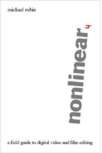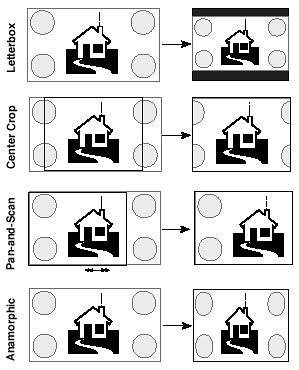July, 2002
Nonlinear/4
A Field Guide to Digital video and film editing
Triad Publishing Company
By Michael Rubin
ISBN 0-937404-85-3
List price: $39.95 U.S.
413 pages
Review By Ken Stone
 Like many new editors, I came to Final
Cut Pro with no NLE experience nor any knowledge of video whatsoever.
In fact when I started, just over two years ago, there was not
a single book on FCP. Since that time there have been a number
of excellent books published about FCP. I have bought and read
all of them.
Like many new editors, I came to Final
Cut Pro with no NLE experience nor any knowledge of video whatsoever.
In fact when I started, just over two years ago, there was not
a single book on FCP. Since that time there have been a number
of excellent books published about FCP. I have bought and read
all of them.
During the past two years I have
learned the terminology used with FCP video. But my knowledge
is FCP-centeric. I have little understanding of video, it's relationship
to film or it's history.
Last week I discover a book "Nonlinear/4
written by Michael Rubin. I can best describe this book as a
complete reference guide to all things video. But its actually
more.
The book starts off with a 'Fundamentals'
section that consists of an introduction to Film and the history
of Video. We are then moved into the early days of video and
linear video editing and then into the digital era and nonlinear
editing. What we learn from this section is the methods that
were developed to make film and video work together. Telecine
and 3:2 pull down, frame rates and transfer, drop frame and non
drop frame, Time Code, EDLs, audio and more.
Rubin covers much more in this
book, including the role of computers and their requirements
that came into play in nonlimear editing. Digital storage, Hard
Drives, RAIDs, Bandwidth, Compression and Codecs, computer and
video pixels, type, aspect ratios, color space, light and fundamentals
of video color, chrominance and luminance, Component and Composite
video, resolution, HDTV and it doesn't stop there.
The book moves on into the world
of editing and then distribution including everything from Broadcast,
Film, High Def, Digital television, QuickTime, the Web and DVDs.
If I have made it sound like this
book is a meandering tour through the past, it's not. Each element
covered in this book is in it's own section. Each section is
brief, concise and clearly written. Very simple (read clever)
analogies are employed to help the reader gain understanding.
While there is technical information, the book is not overly
technical. There is a great deal of art, illustrations and photos.
This art furthers the learning experience and is one reason that
the book works so well, the art really illustrates the lessons
being taught.
I have mentioned that the history
of film and video runs throughout the book. This history is essential
to understanding how and why video is what it is today.
I learned a great deal from this
book and now have a better understanding of why things are the
way they are. Our modern day NLE Digital video is the result
of a long legacy, going all the way back to the early days of
film. This book is a great reference guide as well with a full
index at the back.
I am really glad that I came across
Nonlinear/4. I truly have a better understanding of what's going
on with Video and how it works. This knowledge will certainly
help me with FCP. I have included one excerpt from Nonlinear/4
below as a sample of the way that the book works.
Enjoy,
--ken
Book Excerpt from Nonlinear/4
By Michael Rubin
"ASPECT RATIO BASICS"
The shape of a frame, whether film
or video - analog or digital - is traditionally described by
the ratio of its width to its height. This ratio is called the
aspect ratio. Television (whether NTSC or PAL) is 4:3, which
means it is four units wide by three high. Therefore, if an image
is 10 inches long, the height would be 7.5 inches; if it is 640
pixels long, it would be 480 pixels high. Another way of writing
this ratio is 1.33:1.
Traditional film as projected on
a big screen typically has an aspect ratio of about 16:9 (actually
1.85:1). This is far more "horizontal" than television.
Some say film was originally presented in this wide format because
it was more like the proscenium of a stage, as you would see
it from the audience during an opera, for instance. Regardless,
the issue of aspect ratio becomes important when one wants to
play a movie on TV, but it's the wrong shape. It's also an issue
when a director shoots DV, for example, and hopes to transfer
it to film. Or when producing a TV show to be seen by audiences
in both NTSC and HDTV. Aspect ratio is a hot topic when the subject
of a digital, universal master format is discussed.
Here are the two principal aspect
ratios for moving pictures. The darker, more "vertical"
rectangle is 4:3; the grey horizontal rectangle is 16:9 (below).

If you put a 16:9 image on a 4:3 display,
it will only fit if you shrink it down about 25% and leave blanks
along the top and bottom of the screen. Similarly, a 4:3 image
will only fit on a 16:9 display if you shrink it down and leave
blank spaces along the sides. Thus, there are compromises that
must be made in order to convert material from one format to
another (below).

Methods
Shrinking the image down and leaving bars at the top and bottom
of the screen is called letterbox format; it's the most common
way to transfer film to tape, without having to modify the image
per se.
 But if you decide to avoid the bars and simply crop the image,
and ignore any aesthetic considerations, you might perform a
center crop-which can be remarkably unsatisfying because it chops
off characters and action not in the middle of the screen. In
practice, the most common technique, performed in telecine and
nonlinear online sessions by Hollywood studio clients, is called
pan-and-scan. In this case, the operator moves the 4:3 frame
around on the 16:9 image, keeping the most important material
in-frame at any given moment.
But if you decide to avoid the bars and simply crop the image,
and ignore any aesthetic considerations, you might perform a
center crop-which can be remarkably unsatisfying because it chops
off characters and action not in the middle of the screen. In
practice, the most common technique, performed in telecine and
nonlinear online sessions by Hollywood studio clients, is called
pan-and-scan. In this case, the operator moves the 4:3 frame
around on the 16:9 image, keeping the most important material
in-frame at any given moment.
Finally, you could convert shapes by
using an anamorphic compression (meaning that the image is squished
along one axis but not the other). But people tend to dislike
having their images squished. Research has shown that a squish
of 5% is undetectable, and 7% is detectable, though not objectionable.
But these manipulations are a far cry from the 25% squish or
stretch needed to convert these aspect ratios fully.
For the most part, going the other way
(changing a 4:3 image to 16:9) involves variations on these conversion
methods - called pillarbox, middle cut, and tilt - and - scan.
With frame conversions in both directions,
newer technology makes it possible to mix methods. For example,
a little letterbox plus a little center crop, plus a tiny bit
of anamorphic squeezing can all be used together as a compromise,
better approximating the original source. These blends, as they
are called, reduce the necessity of having to make aesthetic
judgments for each individual scene. All methods will continue
to be needed as long as 4:3 and 16:9 coexist, in their uneasy
truce, in the name of convergence.
Michael Rubin began his career at Lucasfilm,
where he was instrumental in the development of training for
the EditDroid, and in introducing the Hollywood market to nonlinear
editing for film. He spearheaded the nonlinear post-production
of (1989) Lonesome Dove; He assisted Academy Award-winning editor
Gabriella Cristiani with Bernardo Bertolucci's The Sheltering
Sky (1990). In 1991 he was also editor of one of the first television
programs to be edited on the Avid. He is the author of Nonlinear:
A Field Guide to Digital Video and Film Editing is now in its
fourth edition; and recently released his first book for consumers--The
Little Digital Video Book (2002). His seminar "Introduction
to DV" -- coproduced by the American Film Institute and
Columbia University, is available online at www.fathom.com. Visit Michael Rubin's web site.
Nonlinear/4
copyright © 2001 by Michael Rubin
All Rights Reserved. This material is excerpted from NONLINEAR/4
and is used with permission.
You can purchase 'Nonlinear/4' from the
lafcpug store.
Review copyright ©
www.kenstone.net 2002